China’s engineers seem to have made it their mission to defy gravity, logic, and occasionally, common sense. From glass walkways that crack under your feet to bridges with Ferris wheels bolted on top, the Middle Kingdom has turned infrastructure into an extreme sport. Here’s a list of 15 bridges that will make you question everything you thought you knew about getting from point A to point B.
Zhangjiajie Grand Canyon Glass Bridge
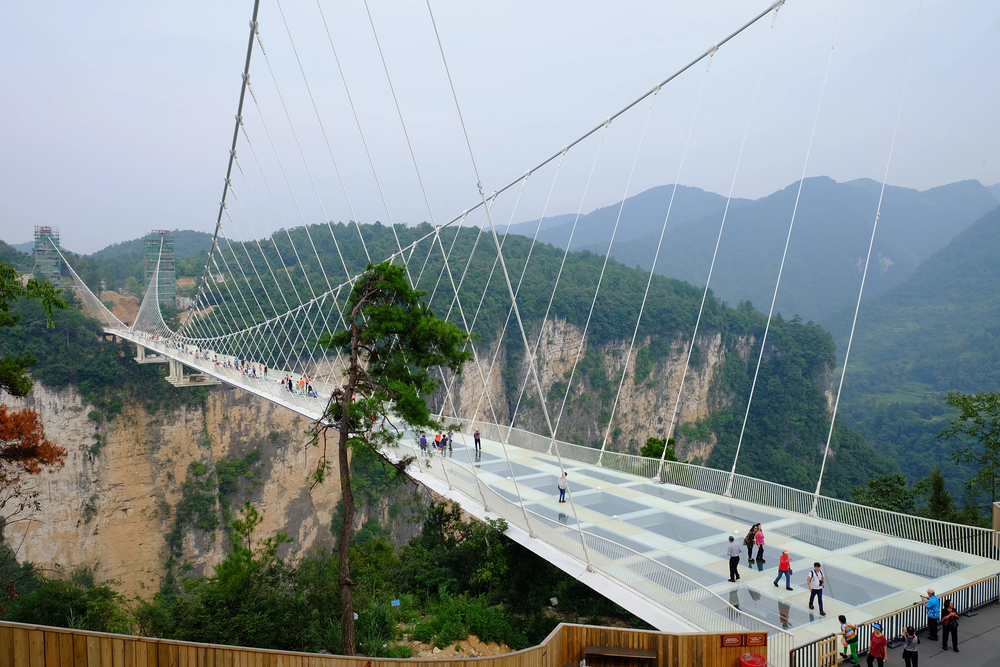
— Photo by u.photostock
Standing 300 meters above the canyon floor, this glass-bottomed monster stretches 430 meters between two cliffs. The bridge spans the canyon between two mountain cliffs in Zhangjiajie National Forest Park and is composed of a metal frame and more than 120 panels of three-layered, 2-inch-thick reinforced glass. When it opened in 2016, crowds were so massive, they had to shut it down after just 13 days. Officials expected 8,000 visitors daily but got 80,000.
The transparent deck offers stunning views of the forest below. But don’t get too comfortable—there are three long swings attached to the underside of the bridge and a provision for making a 285-metre bungee jump, considered to be the highest bungee jump in the world.
Tianjin Eye
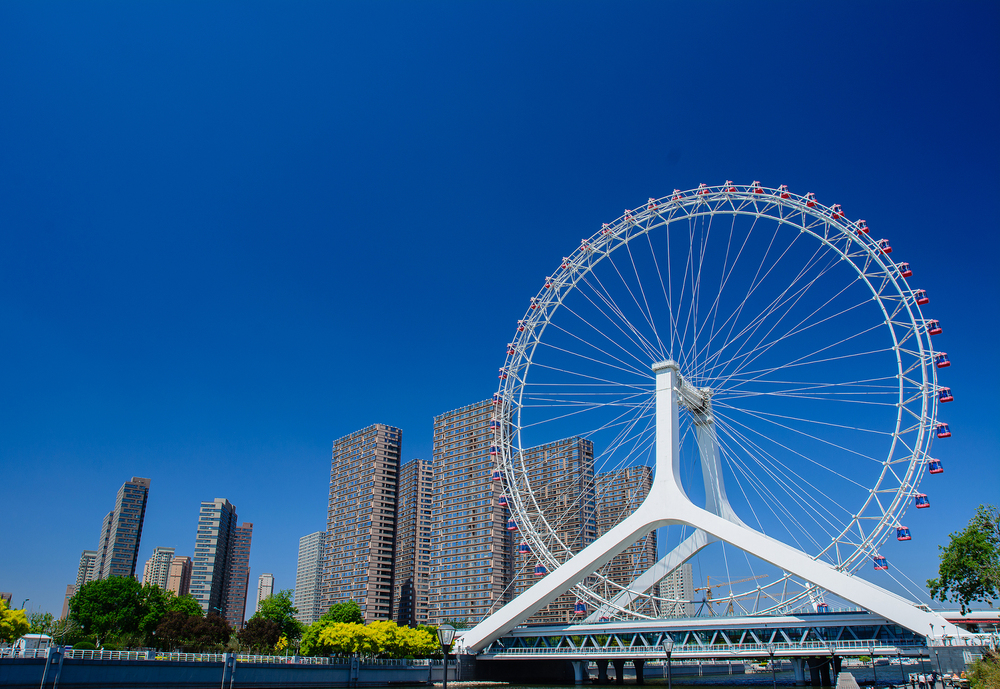
— Photo by thatreec
Most cities put Ferris wheels in parks. China stuck one on a highway bridge. The Tianjin Eye is a 120-meter-tall Ferris wheel built above the Yongle Bridge over the Hai River in Tianjin, and is claimed to be the only such wheel to have been constructed over a bridge in the world. This architectural oddity combines commuting with sightseeing in the most literal way possible.
Picture this: 48 transparent passenger capsules with air-conditioning, each able to carry 8 passengers, take 20–40 minutes to complete a rotation. Traffic flows underneath while tourists float overhead. At night, the whole contraption lights up like a neon dream reflected in the river below.
Duge Beipanjiang Bridge
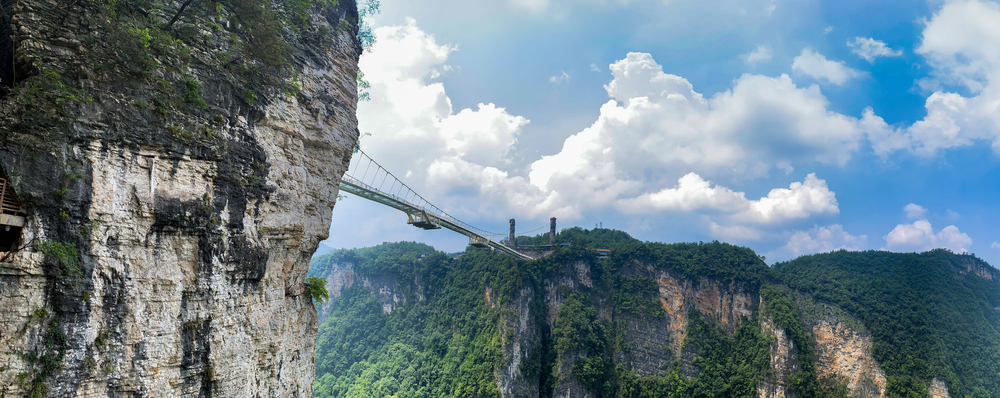
Welcome to the stratosphere of bridge engineering. The Duge Bridge spans the deep gorge of the Nizhu River, with the road deck sitting over 565 meters above the floor of the gorge, making it the highest bridge in the world. It’s like driving across a cloud that happens to have guardrails.
The limestone cliffs drop so deep that much of the river stays in shadow during the day. Standing on this bridge gives you the peculiar sensation of being simultaneously terrified and awestruck. Engineers called it impossible. China built it anyway in 2016.
Shiziguan Floating Bridge
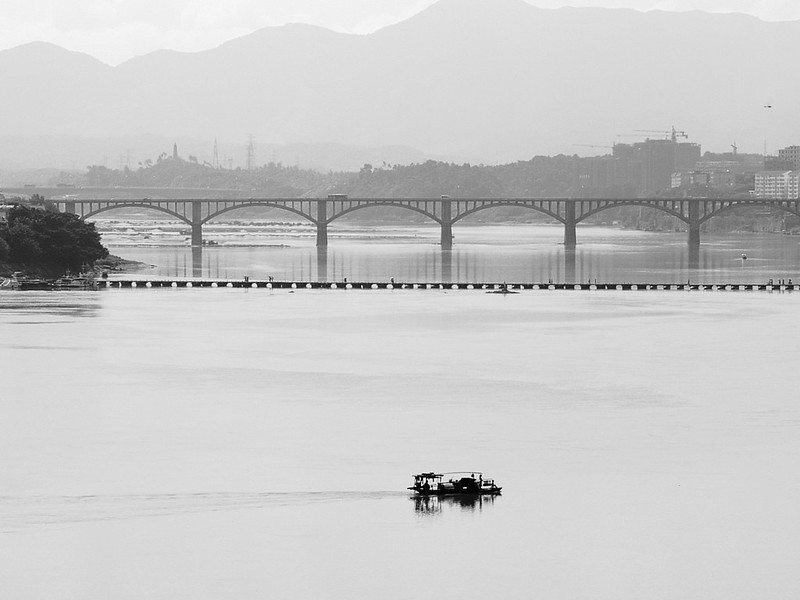
This isn’t technically a bridge—it’s more like a really long boat pretending to be infrastructure. The Shiziguan Floating Bridge spans the turquoise waters of the Qingjiang River and relies on water-filled floats to create stability while maintaining buoyancy. The thing actually bobs with the river’s movements.
Its speed limit of about 12 mph ensures that travelers feel the serene sensation of gliding across the water, akin to a water skimmer dancing on the surface. In 2023, when a vehicle crashed through the railing and sank. The bridge reopened, because apparently danger is part of the charm.
Ruyi Bridge
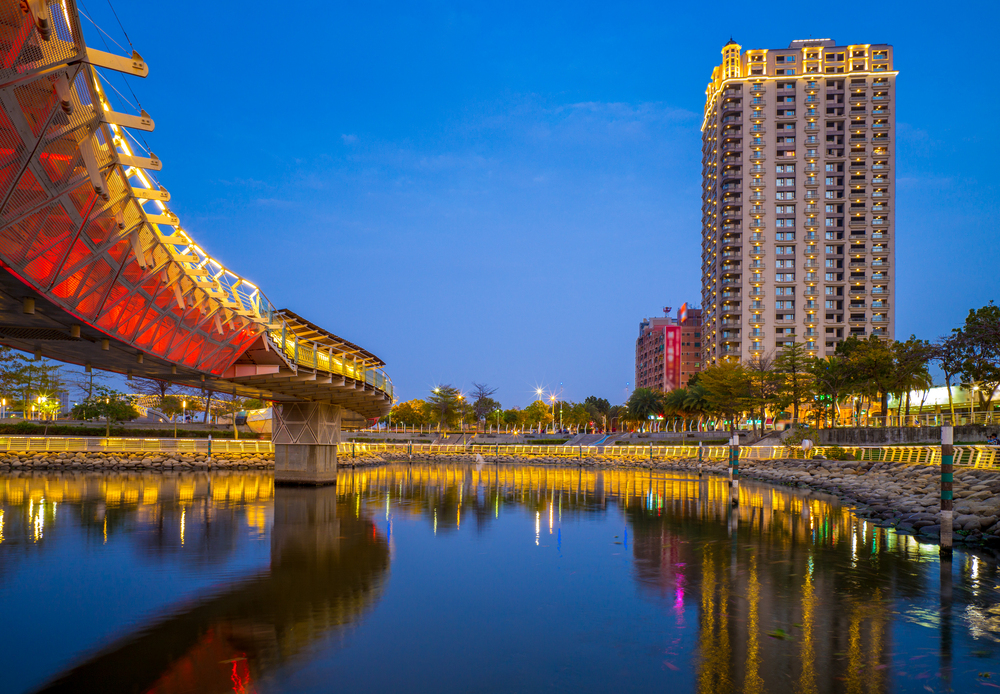
This wavy glass walkway looks like someone tried to draw a DNA strand while riding a roller coaster. The Ruyi Bridge in Taizhou, Zhejiang features three bridges with glass-bottomed walkways designed to look like a Chinese ruyi. The undulating pathways blend with natural scenery in theory. In practice, they look like a futuristic roller coaster that forgot to include the fun parts.
And yes, portions have glass bottoms. Because regular vertigo apparently wasn’t enough.
Gulongxia Glass Platform Bridge
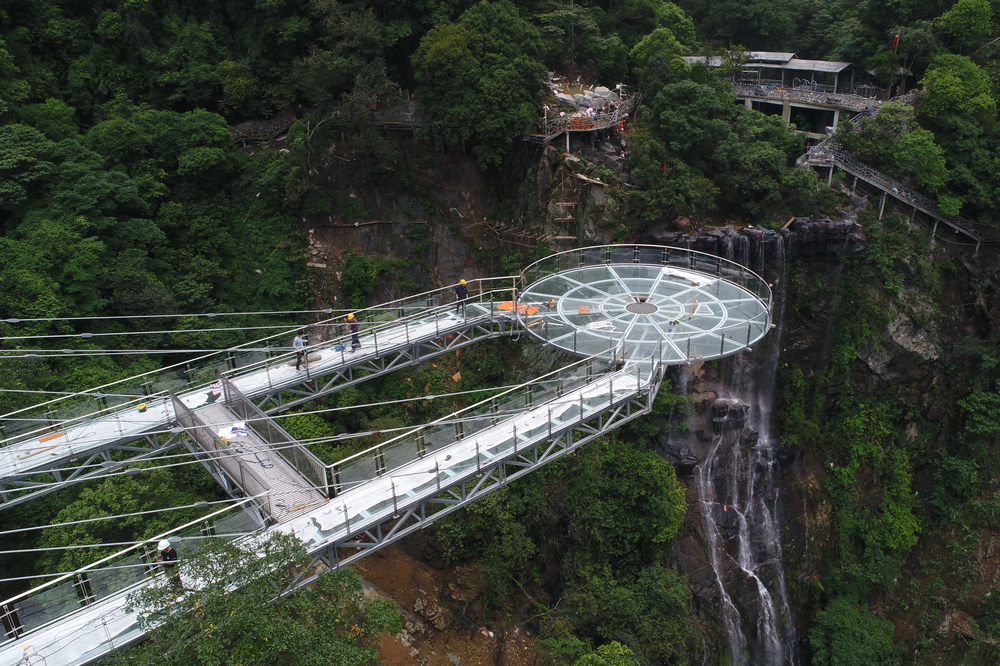
— Photo by ChinaImages
This bridge doesn’t just give you heights—it gives you heights with special effects. The suspended glass bridge is located at the top of the Great Waterfall, and as long as you stand on any one of the three glass structures, you can see the other two. It’s a combo deal: bridge, platform, and waterfall viewing, all designed to make your knees shake.
The waterfall crashes below while you walk on transparent glass 200 meters up. It takes about 45 minutes to experience all three glass structures, assuming you don’t freeze halfway across.
Lucky Knot Bridge
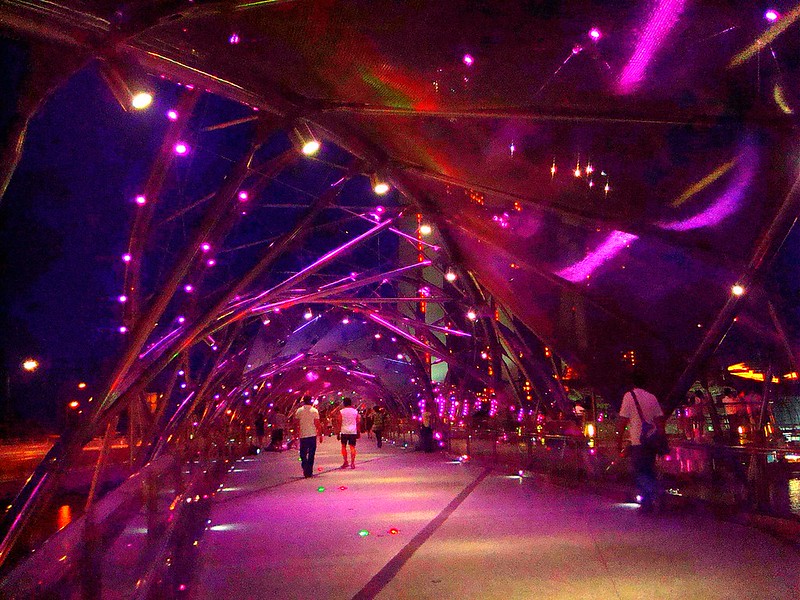
Some bridges are functional. Others are art installations. This one is both and neither. The Lucky Knot Bridge in Changsha city was designed by NEXT architects and has a form similar to an “X”, crossing at the tower. It twists through the air like a DNA helix having an identity crisis.
The red steel curves create multiple crossing points at different levels. Walking across feels like navigating a three-dimensional puzzle where the solution is “just keep going up.”
Tianmen Glass Skywalk
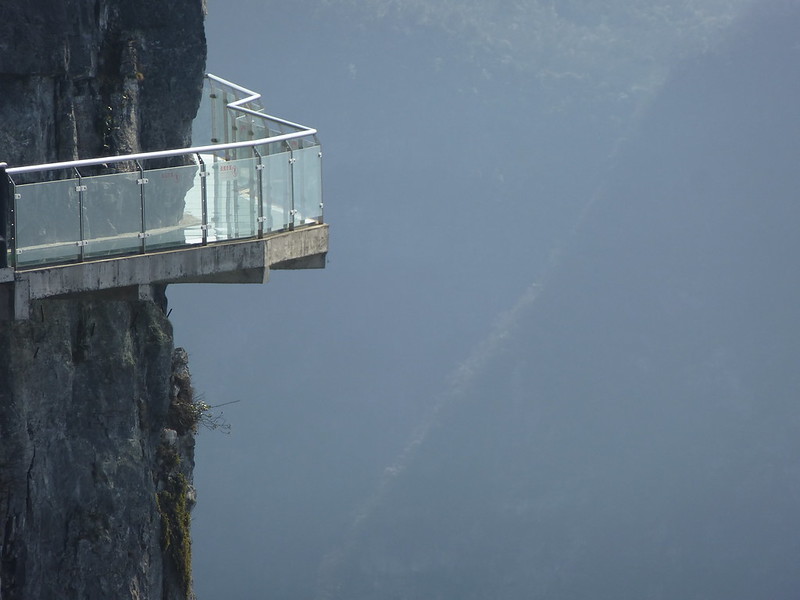
Built along sheer cliffs above Tianmen Cave, this glass pathway clings to rock faces like architectural ivy. The skywalk was added to the original cliff-hanging Guigu Plank Road built above Guigu Cave, being the first skywalk on Tianmen Mountain. The old wooden planks were replaced with transparent terror.
From here you can see the famous 999-step staircase leading to Tianmen Cave. If you dare look down. The glass panels are 24mm thick, which sounds substantial until you’re standing on them.
Sidu River Bridge
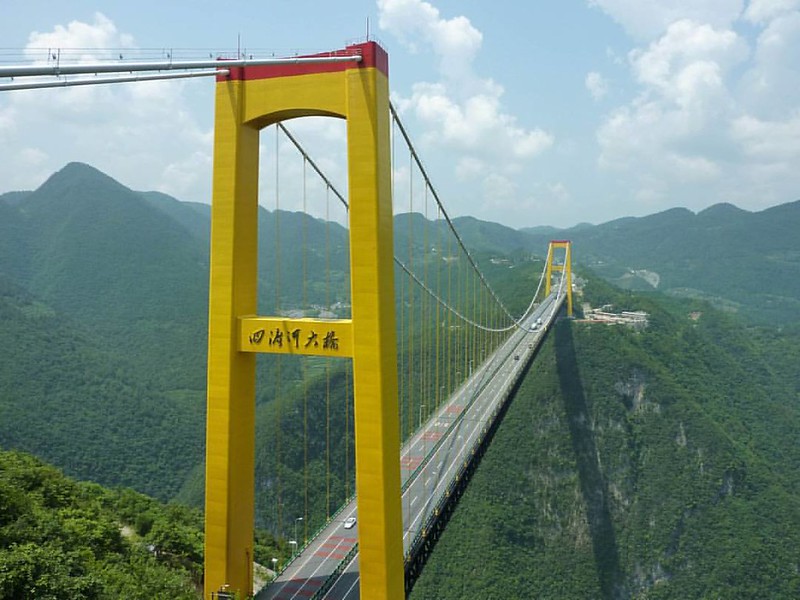
This suspension bridge had engineers scratching their heads before construction even began. How do you string the first cable across a 1,627-foot-deep canyon when there’s no way to physically carry it? Simple: you fire it across with a rocket. The Sidu River Bridge was the first bridge in the world to use military rockets to establish its pilot cable.
Stretching 4,009 feet across the valley of the Sidu River near Yesanguan, this bridge held the title of world’s highest bridge from 2009 to 2016. Standing on it gives you the peculiar sensation of being suspended in mid-air above a river that looks like a thin ribbon below.
Huajiang Canyon Glass Bridge with Waterfall
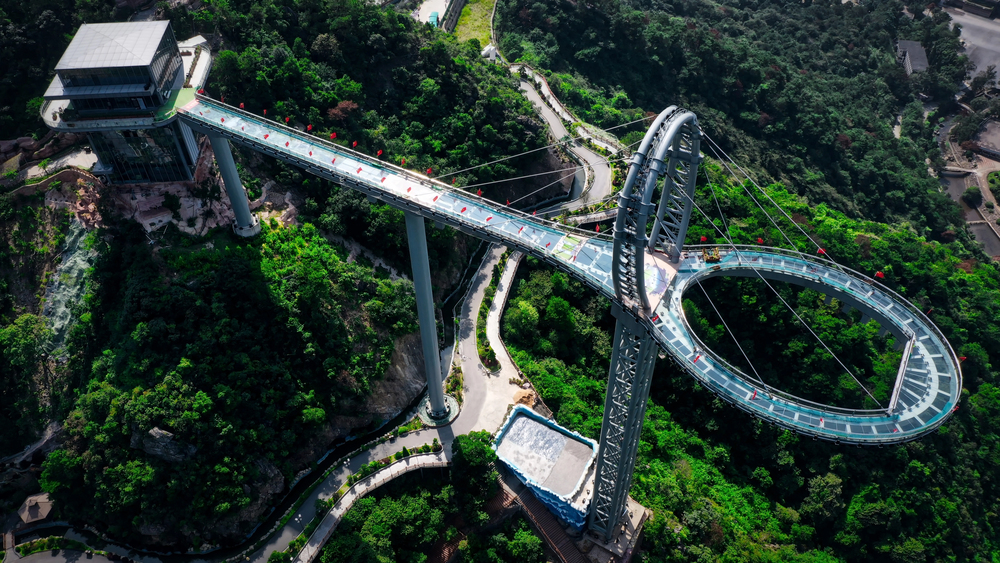
The engineers apparently thought regular glass bridges were too boring, so they added a 360-degree waterfall. This bridge combines with spectacular musical waterfall and is known as the world’s largest ring-shaped musical waterfall, 168 meters in circumference with 450 nozzles and 450 solenoid valves. Because nothing says “infrastructure” like choreographed water features.
You walk on glass while water cascades in a perfect circle around you. It’s either the most beautiful bridge in China or the most elaborate way to take a shower.
Shiniuzhai Glass Bridge

— Photo by ChinaImages
China’s first high-altitude glass bridge sparked the entire transparent walkway craze. The 300-meter-long and 180-meter-high bridge was open to travelers on September 24, 2015, located inside the Shiniuzhai National Geological Park. Visitors regularly freeze mid-crossing, creating human traffic jams of terror.
The original wooden planks were replaced with 24mm-thick glass panels. Engineers promised it would never break. Visitors test this theory daily through involuntary stress tests.
Fangshan Glass Bridge
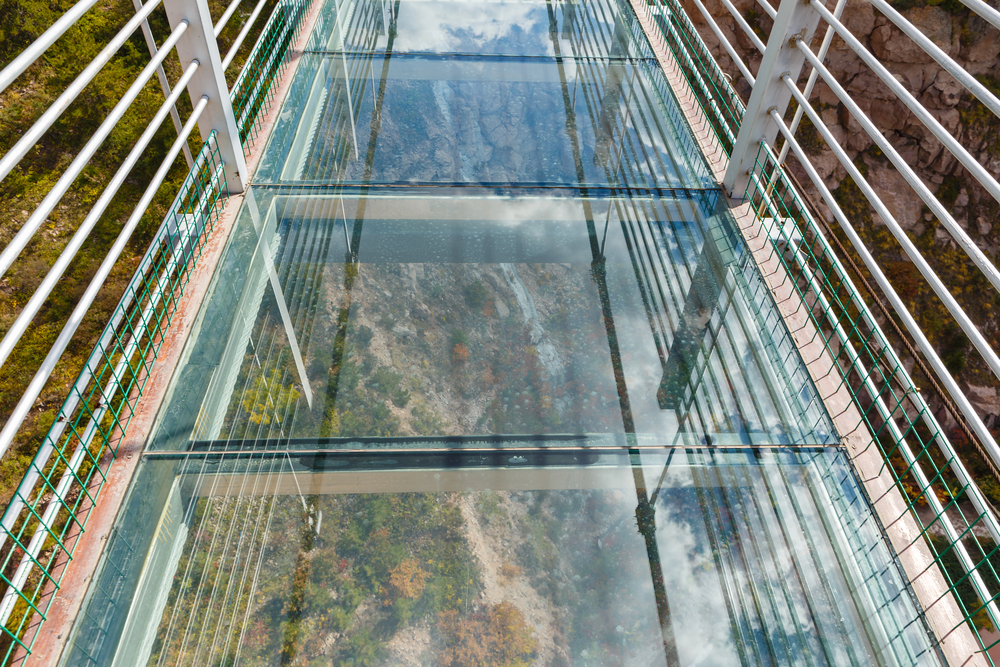
Named “Yunque Road” after Chinese mythology, this bridge tells the love story of the cowherd and weaver girl. The total length is 236 meters with a height gap of 166 meters between the bridge and valley bottom. It’s marketed as the perfect place to test your partner’s courage.
Nothing says romance like mutual vertigo. Couples who survive crossing together supposedly have unbreakable bonds. The bridge is still being tested.
Dadong River Gorge Suspension Bridge
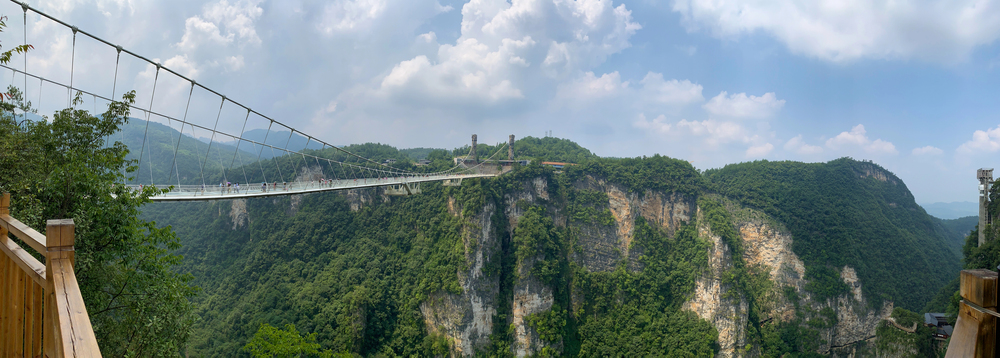
This temporary bridge looks like it was assembled by someone who lost the instruction manual. Stretching 240 meters across the west side of a massive gorge, it has no towers or base for support, relying only on four steel cables to support vehicles up to 45 tonnes in weight. It’s only wide enough for one vehicle and sways in the wind.
The bridge is designed to facilitate the construction of an even more impressive piece of infrastructure, Shuangbao Bridge, which will be the world’s largest double-arch bridge. Once that’s built, this terrifying crossing will hopefully be demolished. Hopefully.
Aizhai Bridge
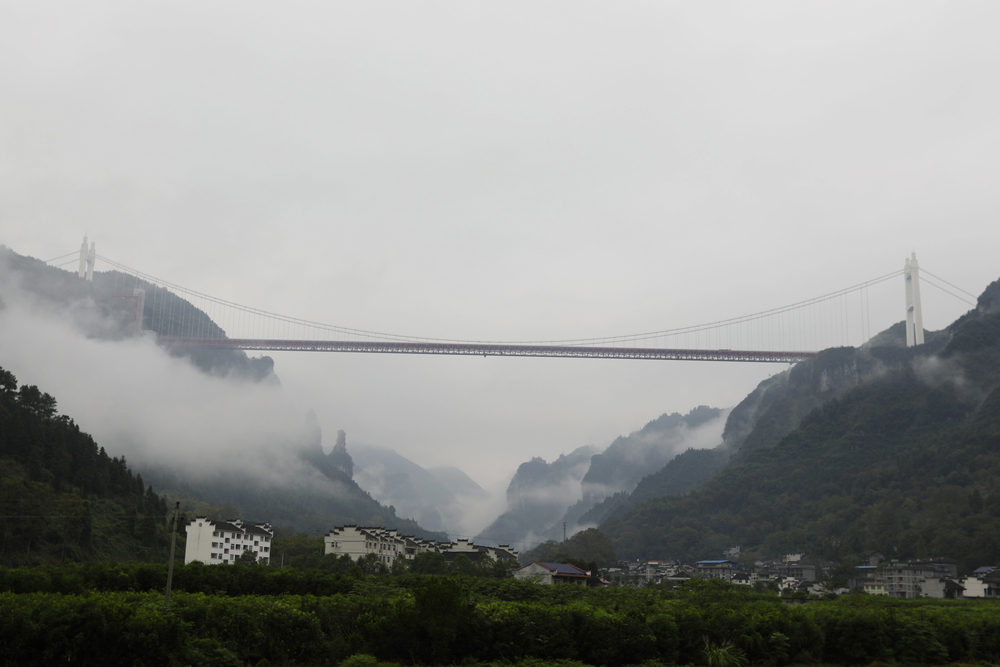
— Photo by ChinaImages
Most suspension bridges connect two points at roughly the same elevation. Aizhai Bridge connects two tunnels blasted through mountain peaks, making it the world’s highest tunnel-to-tunnel bridge. With a main span of 1,146 meters and deck height of 336 meters above the DeHang Canyon, it literally emerges from one mountain and disappears into another.
The bridge has 1,888 lights to increase visibility at night, turning the canyon into a glowing spectacle. But the real attraction is the glass walkway underneath the highway deck, accessible via escalators and elevators, where you can experience the full terror of the 1,102-foot drop. The bridge also hosts BASE jumping festivals, because apparently driving across it isn’t exciting enough.
Shanghai Jinmao Tower Cloud Trail
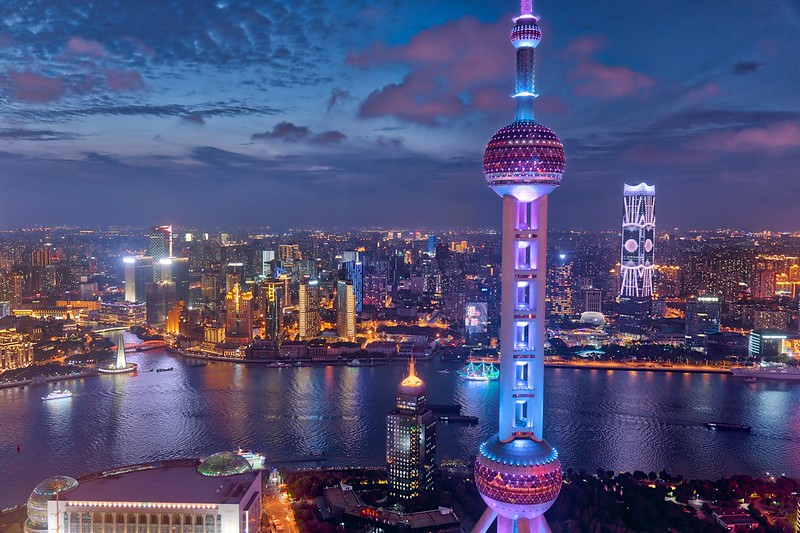
This glass walkway breaks the mold by offering city views instead of nature. The most noticeable difference between this glass bridge and others is that visitors can appreciate the modern scenery, seeing a bustling cityscape that allows people to feel the smallness of the audience from the perspective of God. You’re walking on glass 88 floors above Shanghai’s streets.
Instead of forests and rivers, you see skyscrapers and traffic. Urban vertigo hits different when you realize you’re higher than most airplanes.
Engineering ambition meets gravity
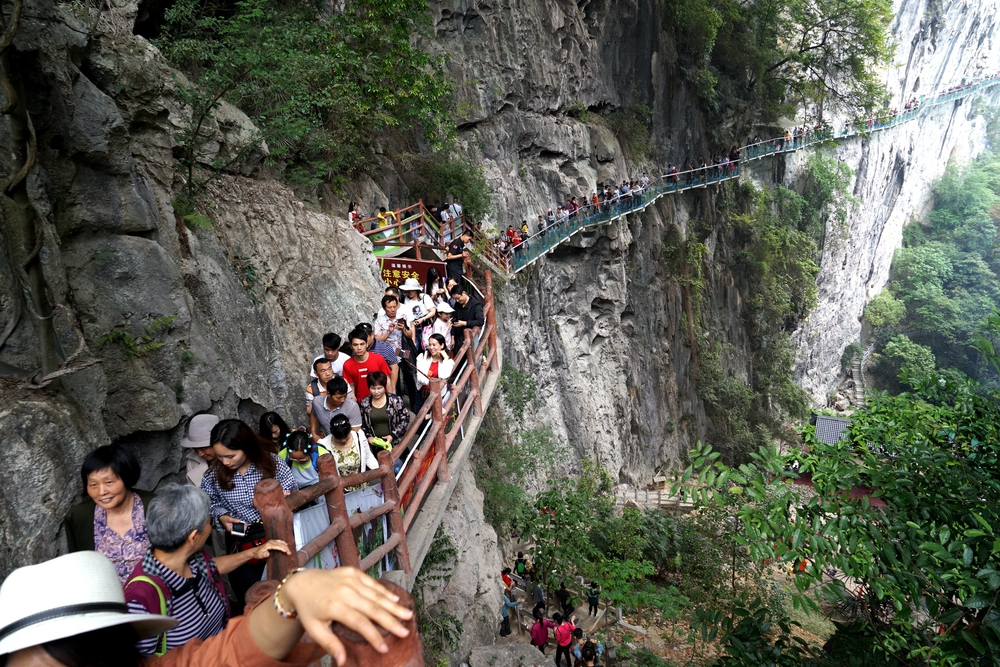
— Photo by ChinaImages
China’s bridge builders have essentially turned infrastructure into performance art. Each structure seems designed to answer the question: “What if we made crossing the street absolutely terrifying?” From glass that cracks under your feet to ferris wheels bolted onto highway overpasses, these bridges prove that functional doesn’t have to mean boring.
The country shows no signs of slowing down either. The Huajiang Grand Canyon Bridge, currently under construction, will tower 625 meters above its valley—because apparently 565 meters wasn’t quite heart-stopping enough. China has transformed the humble bridge from a simple means of getting across into a destination that tests your relationship with gravity, your trust in glass panels, and occasionally your ability to maintain composure while a ferris wheel spins overhead.
More from Travel Pug

- 20 Best Beach Towns in the Carolinas
- 13 Destinations Where Tourists Regularly Regret Their Trip
- 20 Things You Actually Get in First Class
- 20 Small Airports With Aviation Museums
- 20 Places in the U.S. That Are Perfect for a Reset Trip
Like Travel Pug’s content? Follow us on MSN.
